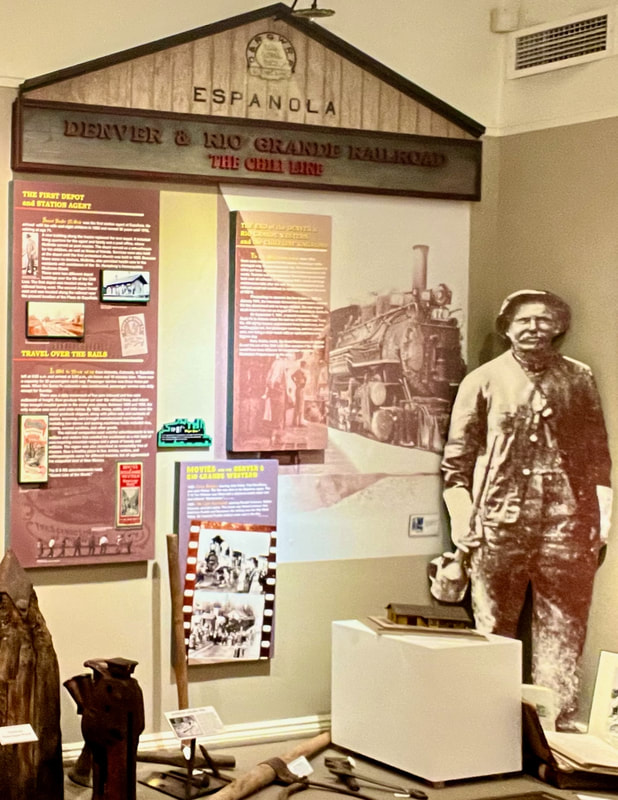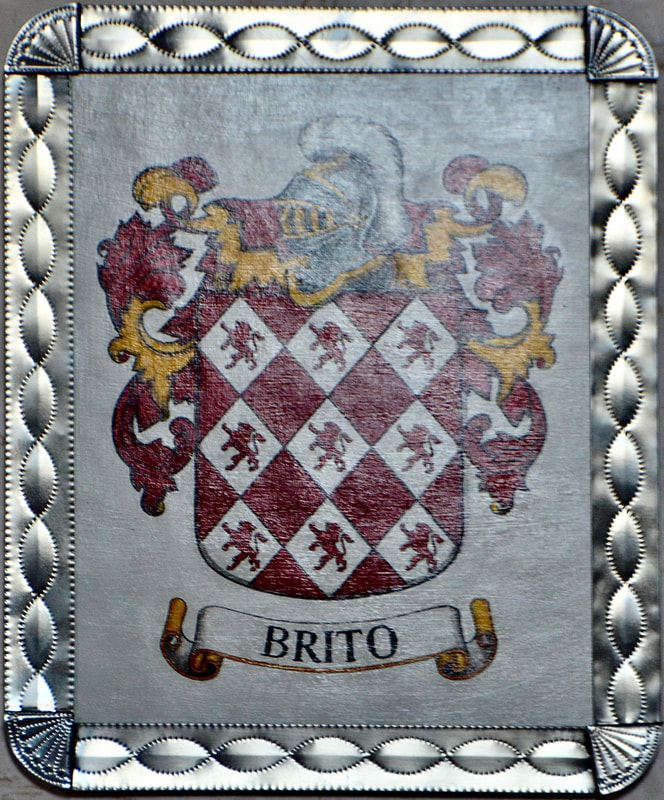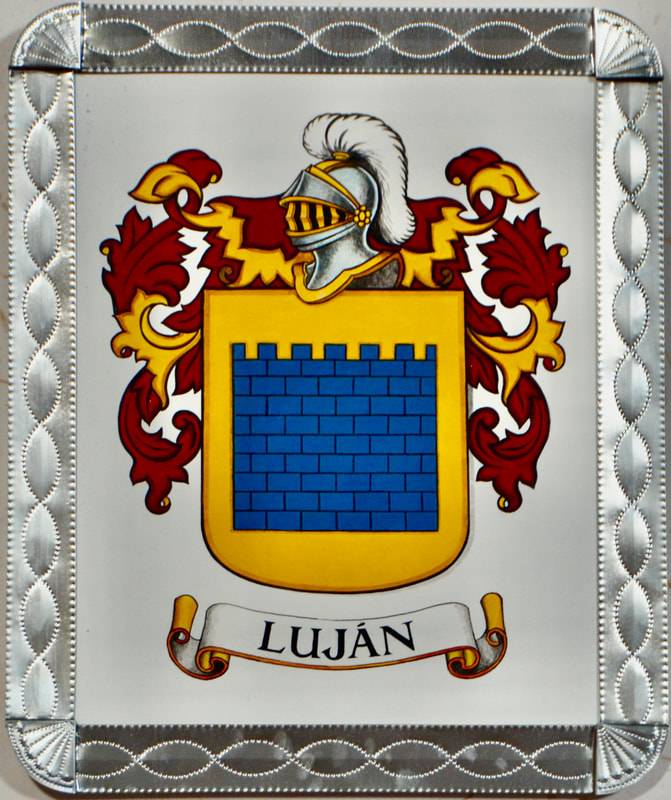EXPLORING NEW MEXICOEspañola is not a Spanish woman
|
|
|
By Miguel Pérez
Part 21 of a series Searching for a location that would allow me to stay in a hotel near several Hispanic historical sites I wanted to visit in northern New Mexico, I figured that I could not go wrong with Española. And I don’t mean a Spanish woman. In New Mexico, Española is city! And a valley too! Just north of Santa Fe and flanked by the Jemez Mountains on the west and the Sangre de Cristo Mountains on the east, Española Valley encompasses several Indian pueblos and reservations and one mostly-Hispanic city, "Española," which is smack in the middle. |
|
“When it was described by Gaspar Castaño de Sosa in 1591, the Española Valley contained about 10 Tewa-speaking pueblos, several of which are still occupied today," says a road marker here. "Juan de Oñate established New Mexico’s first colony here in 1598. Long on the northern frontier of Spanish settlement, the Valley has continuously reflected its Indian and Spanish heritage.”
I suppose local folks know exactly what streets divide one pueblo from another, but if you are a visitor, ´buena suerte! In this part of the country, you can be driving around and going in and out of Indian reservations without even knowing it. |
|
This valley is not a melting pot. It's a salad bowl of Native American, Hispanic and Anglo cultures, where each community retains its own rich flavor. The Natives came here more than 1,000 years ago, followed by Hispanics who started coming more than four centuries ago, and by Anglos who came on the railroad starting in the 1880s.
It is also a microcosm of the state of New Mexico. From here, you can go mountain hiking or snow skiing, horseback riding or river rafting. You can celebrate Indian Pueblo feast days and Hispanic fiestas, or shop for jewelry, pottery or many other Hispanic or Indian craft. You can visit ancient cultures at nearby archeological sites. You can try your luck at Indian reservation casinos, or dig for healing dirt at El Santuario de Chimayó! In other words, I could live here! lol In the center of the valley, the City of Española is a small town (see map) divided by the Rio Grande. It has some 10,500 residents, of whom about 85 percent are Hispanic! Yet it is surrounded by four Tewa Pueblos; Ohkay Owingeh, San Ildefonso, Pojoaque and Santa Clara. |
|
In the downtown, southwest of the city, the Plaza de Española, with its modern gazebo, serves as the key location for fairs, concerts and other community activities. According to museum exhibits here, Hispanic families began to settle in this valley in the late 1700s. They established a farming and ranching community originally known as "Las Vegas de los Vigiles," because the meadow on the western bank of the Rio Grande was owned by the Vigil family.
But the town was not formally established until the railroad came along in the 1800s. And it began as a tent city! |
|
"The town was founded in the 1880s as a stop for the Denver & Rio Grande railroad at the site of what is now the Plaza de Española," says an exhibit at the Bond House, once the home of a prominent Española merchant, and now one of two small museums at the plaza. And when the railroad was completed, another exhibit explains that this became a "track-end town" where "entrepreneurs clustered in tents and shanties."
When Española opened its first post office in 1881, the town had a population of 150 people, according to the Bond House. It also had numerous saloons and a popular restaurant, the museum explains. Folk history alleges that it was railroad workers who inadvertently named the town when they came looking for a restaurant where the cook was a "Spanish Woman," thus the name Española. But think about it! To end up with a city named after her, that española must have been a great cook! lol They even have a street called "Calle de las españolas." |
|
"With the arrival of the railroad, the town's economy made a major shift from subsistence farming of the surrounding villages towards merchant trade," another Bond House exhibit explains. "Money wages changed the barter economy to one of cash and credit purchases, thus Española emerged as a trade center."
At the Misión y Convento, the plaza's other museum, where executive director Gabriela Silva gave me a personal tour, you get many more New Mexico history lessons from the art on the walls. And you learn just how much the arrival of the railroad changed the state. "Thousands of new people arrived daily; goods and supplies arrived from the East in large quantities," a museum exhibit explains. "Farmers and ranchers in the territory could ship their products East, and new towns sprung up along railroad lines." And so, what started as a small farming hamlet and had grown into a railroad town was merged with 10 other communities (covering parts of Santa Fe and Rio Arriba counties) and finally incorporated as a village in 1925. But when diminishing cargo and passengers forced the railroad in to close 1941, again the change in Española was dramatic. Unemployment drove folks to either leave the area or return to a farming-driven economy. However, when the Manhattan Project began its research on nuclear weapons in 1942, many Españolans found work at the nearby Los Alamos National Laboratory. In 1964, the village of Española officially became a city, a very Hispanic city! You see it in the way people express pride in their community, in their history in this area, and in the way they celebrate their annual fiesta. In my next article, you will see this. |
|
You see it at the Misión Museum and its two impressive collections of very educational artwork, especially if you take the time to read their elaborate descriptions. One is a timeline of New Mexico's history (see slideshow), and the other illustrates the churches and the patron saints of the state's Indian pueblos (see photos). Amid some impressive woodwork, from the ceiling to the benches, the walls are also adorned with 14 Spanish coat of arms representing the surnames of the settlers who came to this area with Oñate in 1598, and who still have descendants here! (See photos).
The plaza and the Misión Museum were built to showcase the city's Hispanic culture. The plaza's fountain is a meant to resemble the fountains in Malaga, Spain, and the Misión Museum building is a speculative replica of the Spanish colonial style church archeologists believe was built by the Oñate expedition. It is based on the 1944 excavations by the University of New Mexico in San Gabriel, the long-lost capital of New Mexico! There is very little left of San Gabriel, just north of Española, but stay tuned; I intend to find it! |
They came with Oñate:
|
|
But before we leave Española, we must go to a fiesta! While la Plaza de Española seems deserted in the photos on this page, they were taken on a weekday, a couple of days before the big fiesta. Wait until you see my next article! I came here just in time for the annual Fiesta del Valle de Española, a weekend when Hispanics pack the plaza to commemorate the introduction of Christianity to this area, and to sing, dance and celebrate their proud heritage in this part of the country. I took a lot of notes, photos and videos. Stay tuned!
|
To read other parts of this ongoing series, click: EXPLORING NEW MEXICO



































